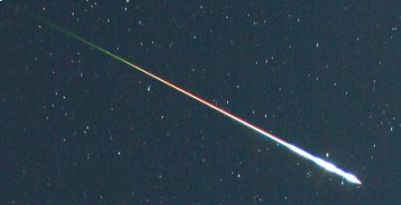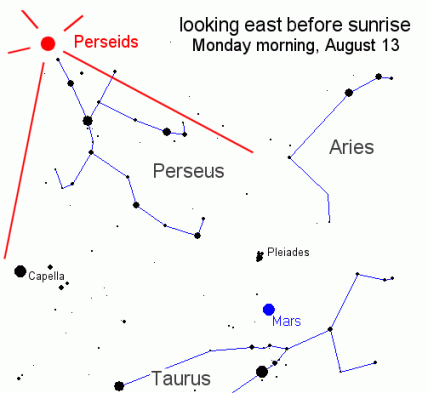This year the moon will be in its birthplace and therefore will not interfere with the observation

Perseid was caught on camera on August 12, 2006.
Photo: Pierre Martin, Canada. Pierre Marti
For news about the 2009 Perseid shower
Write down in your diary the night between Sunday and the 12th of August 2007, the Perseid shower at its peak. "It's going to be a spectacular show," says Bill Cook of NASA's Marshall Space Flight Center. "The moon completes its course on August 12, which means there will be no moonlight, the sky will be dark and many meteors will illuminate the night sky." Cook estimates that there will be one or two Perseids per minute at peak times.
The origin of the show comes from the comet Swift-Tuttle. Even though the star is far from Earth its tail will fit into Earth's orbit. Dust remnants from the comet will collide with the Earth's atmosphere at a speed of 212,433 km/h. At such a speed, even a small amount of dust causes a flash of light - (meteor). Meteors coming from Swift-Tuttle pass through the Perseus star system, which is why they are called the Perseids.
If so, the shower will begin between 9:00 and 10:00 on the evening of Sunday, August 12, when the constellation Perseus will be in the northeast. The meteors emerge into the atmosphere from the eastern region above our heads and fall like stones on the surface of a lake.
"At 2:00 a.m. Monday, August 13, dozens of Perseids may be flying across the sky every hour," says Cook. The peak will occur near dawn and may increase the rate of meteors per minute.
"Go as far as possible from the lights coming from nearby cities," suggests Cook. The Perseids appear brighter the darker the observation site, a good time to go out into nature.

Map of the eastern sky on August 13, 2007.
And there is also a bonus: the planet Mars. In the constellation Taurus, just below the constellation Perseus, Mars will shine as a bright red star. Many Perseids you will see on the night between Sunday and Monday will pass very close to it. Instead of following the meteors you may be drawn to the planet Mars, perhaps because of its bewitching red color or because it doesn't twinkle when these other stars just stare back at you.
This event causes deep thought at four o'clock in the morning, the planet Mars shines in the east, meteors pass across the sky, and a summer breeze blows pleasantly.

6 תגובות
I suggest seeing it in a desert area because there is no light and pollution and thus the view is much better (this is why you see many stars in the desert)
Where is the best place to be at that time to see it?
The star system Perseus + the planet Mars will be found on the eastern side of the sky map from midnight (approximately) Israeli time, until dawn on Monday, August 13.
Is this the Israeli clock and will it show in Israel as well?
Are we talking here about Israel time or US time??
Please answer me as soon as possible...
Something poetic, the end.